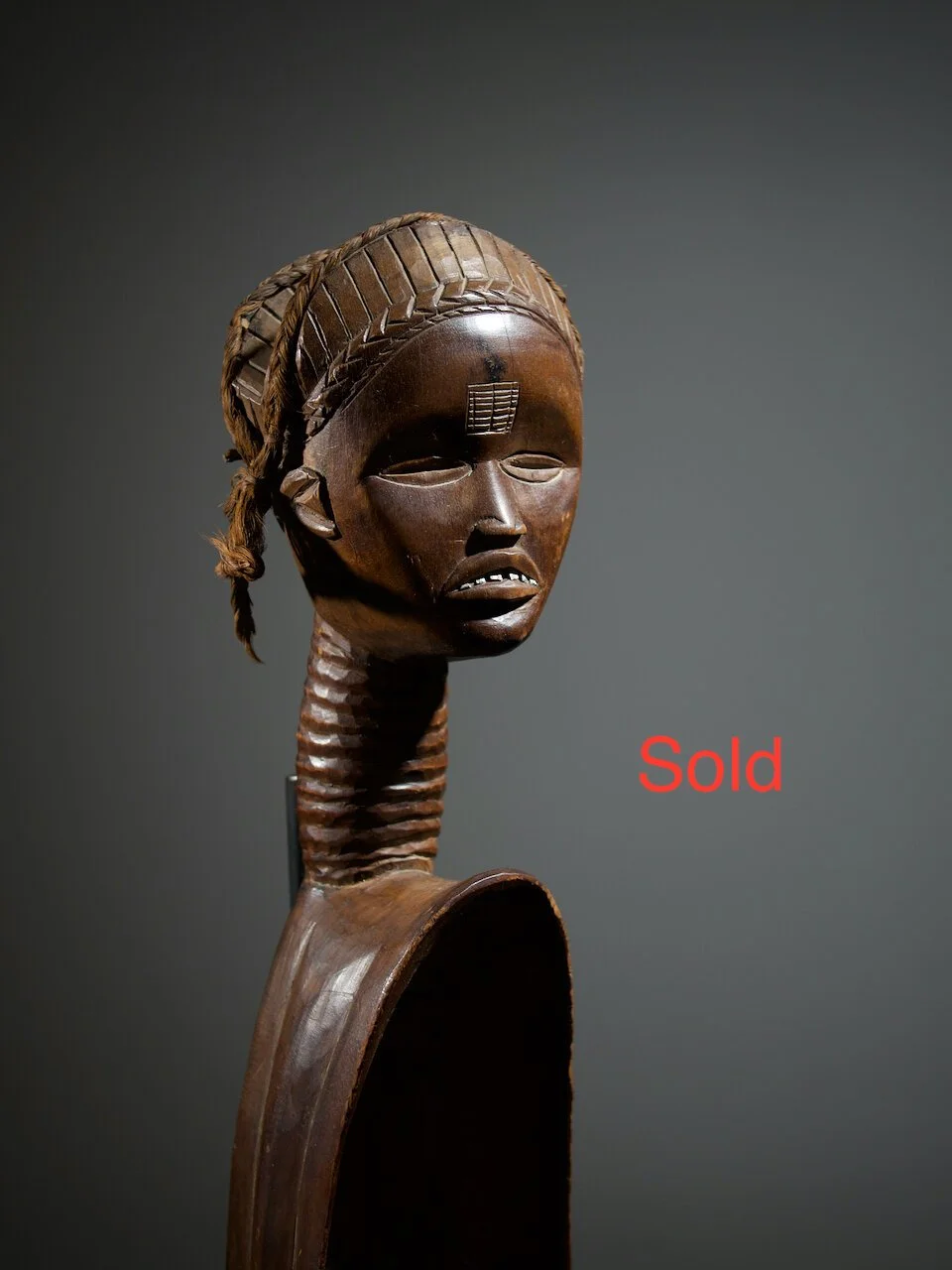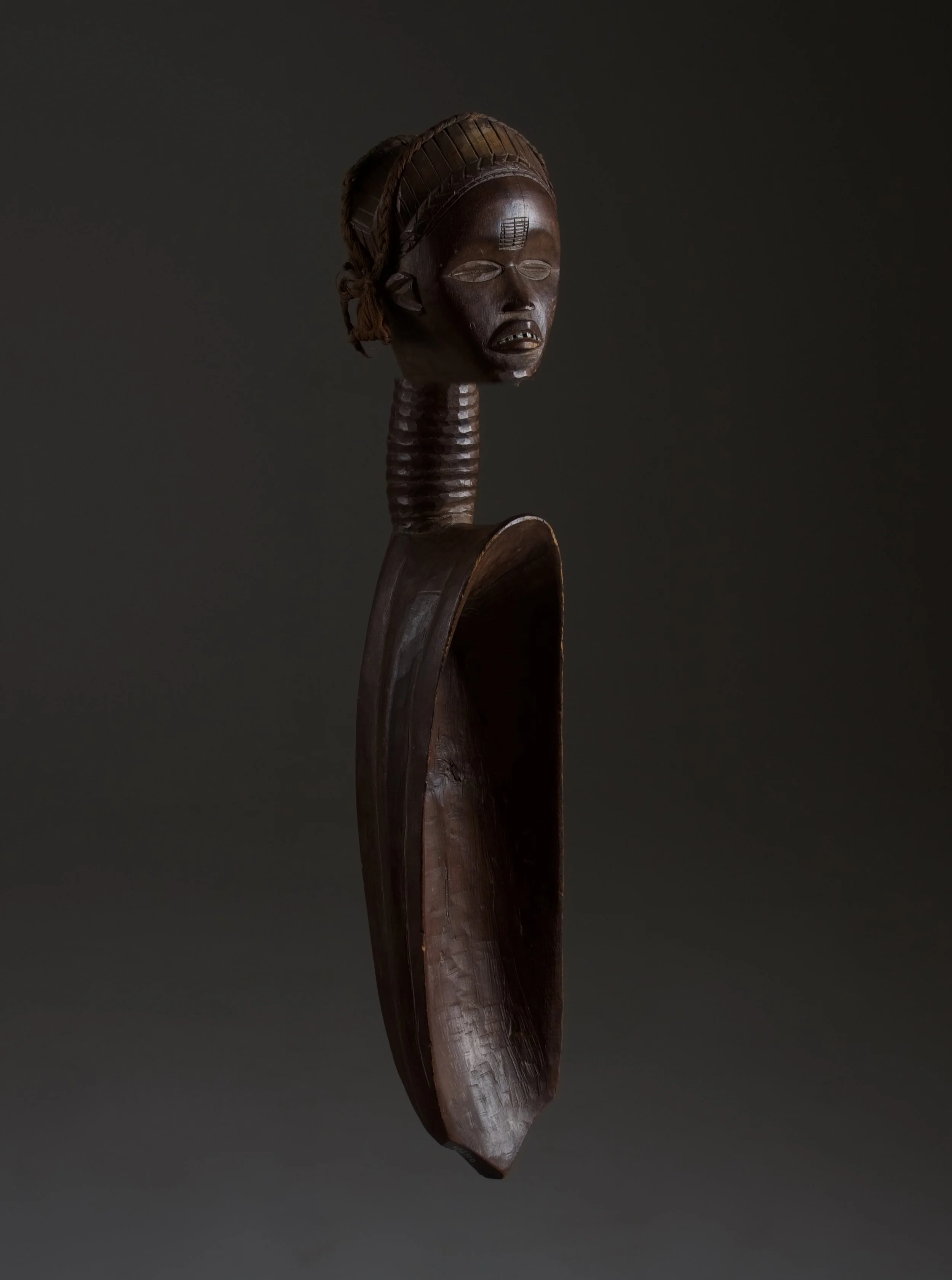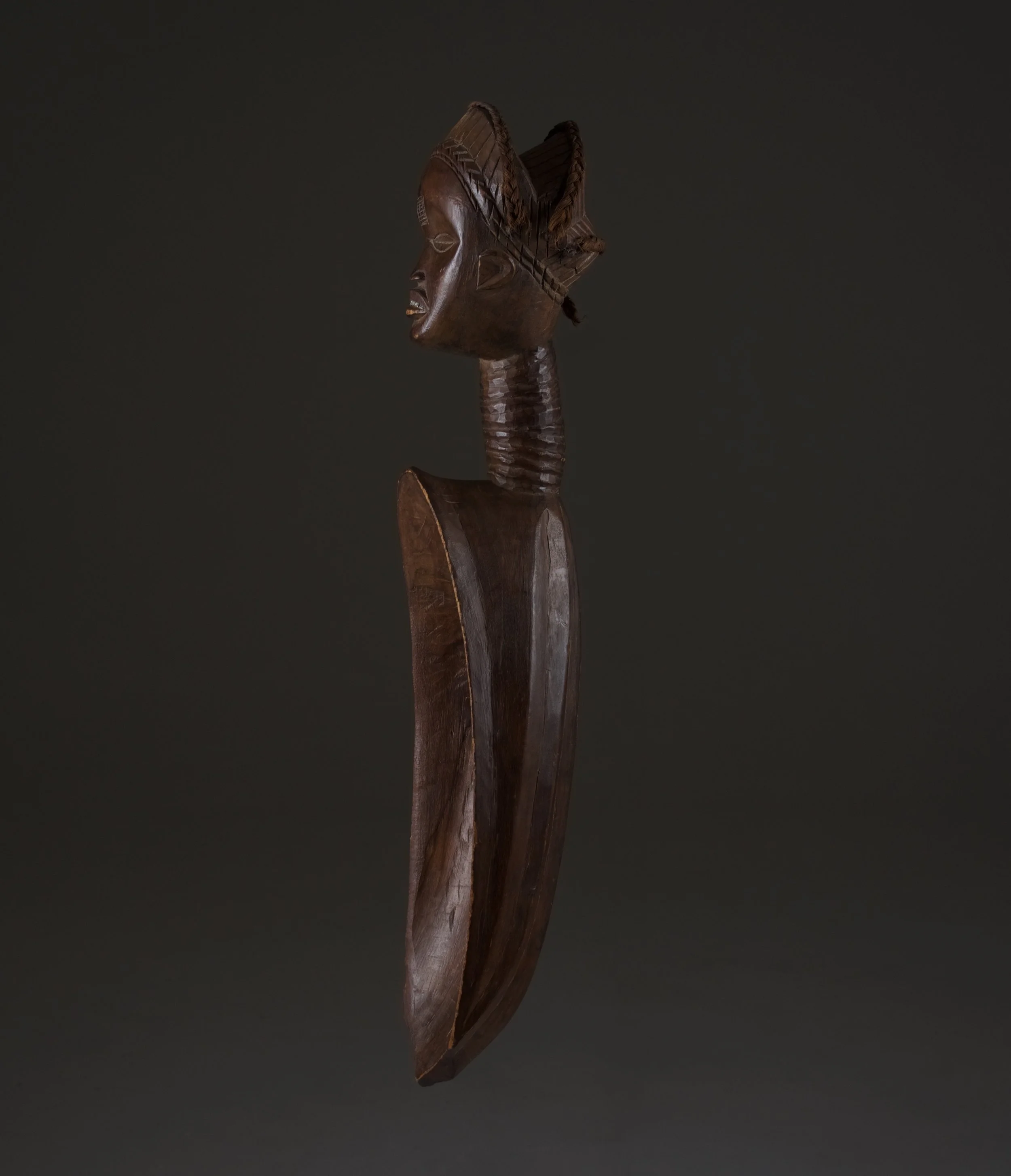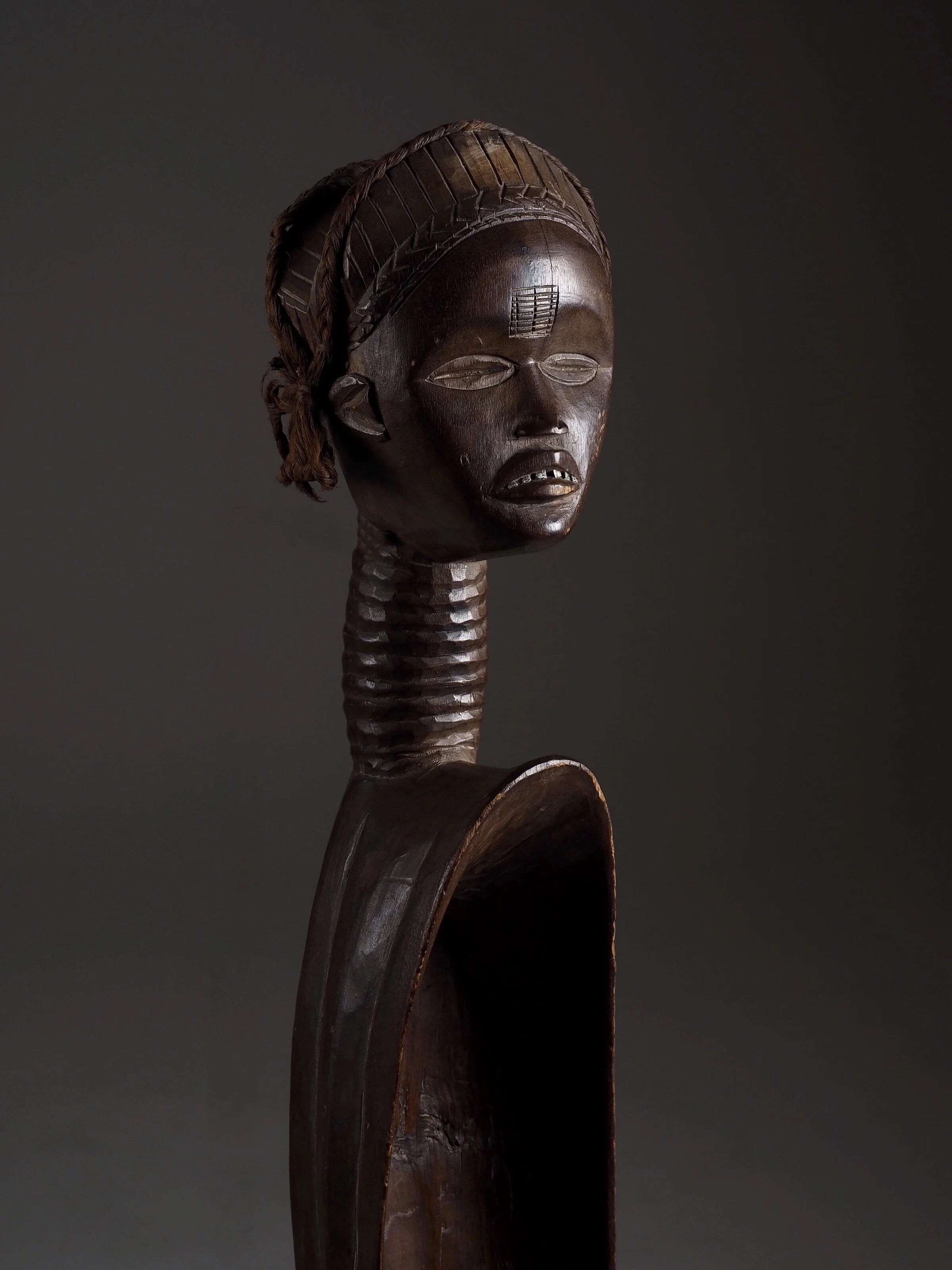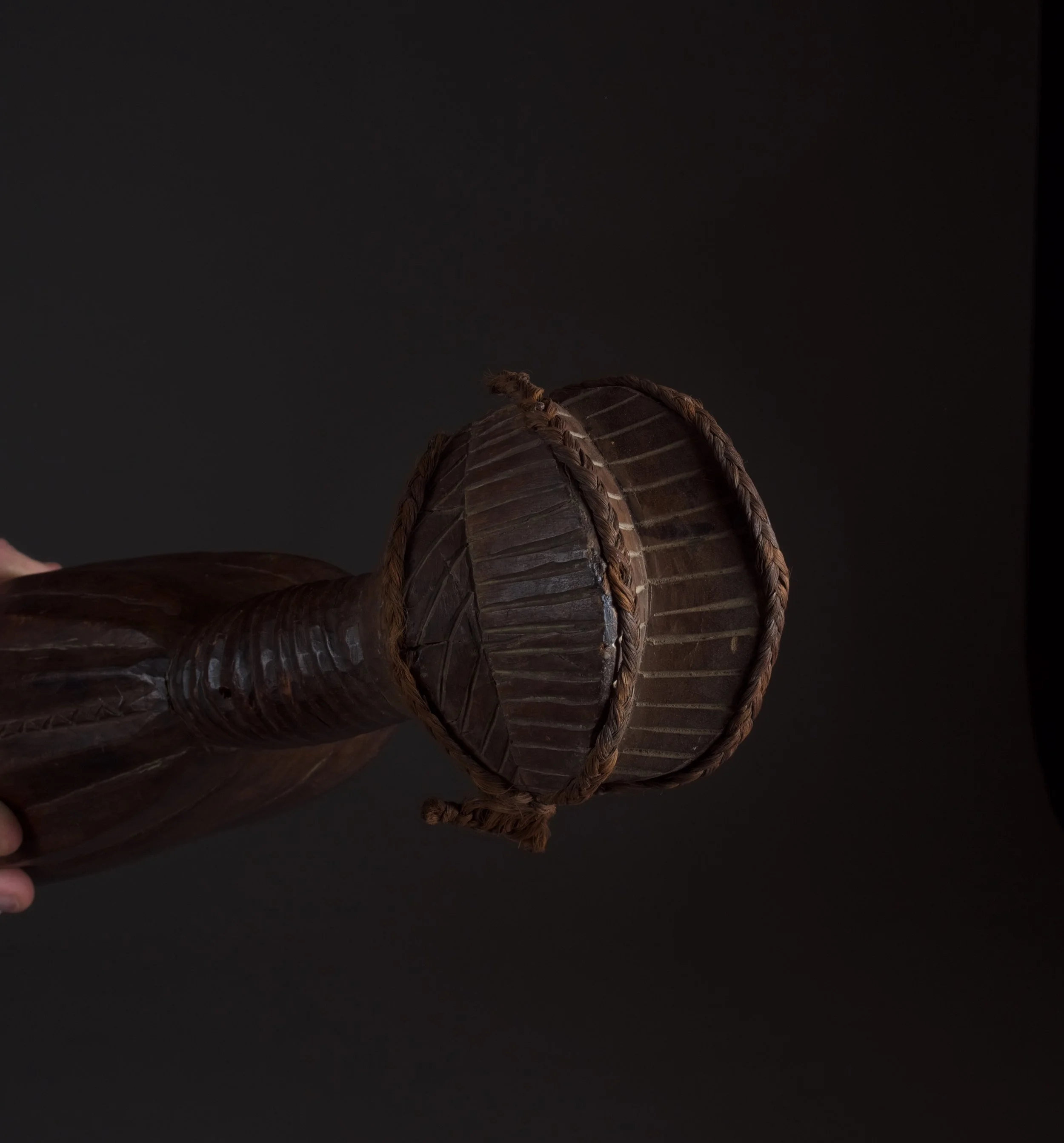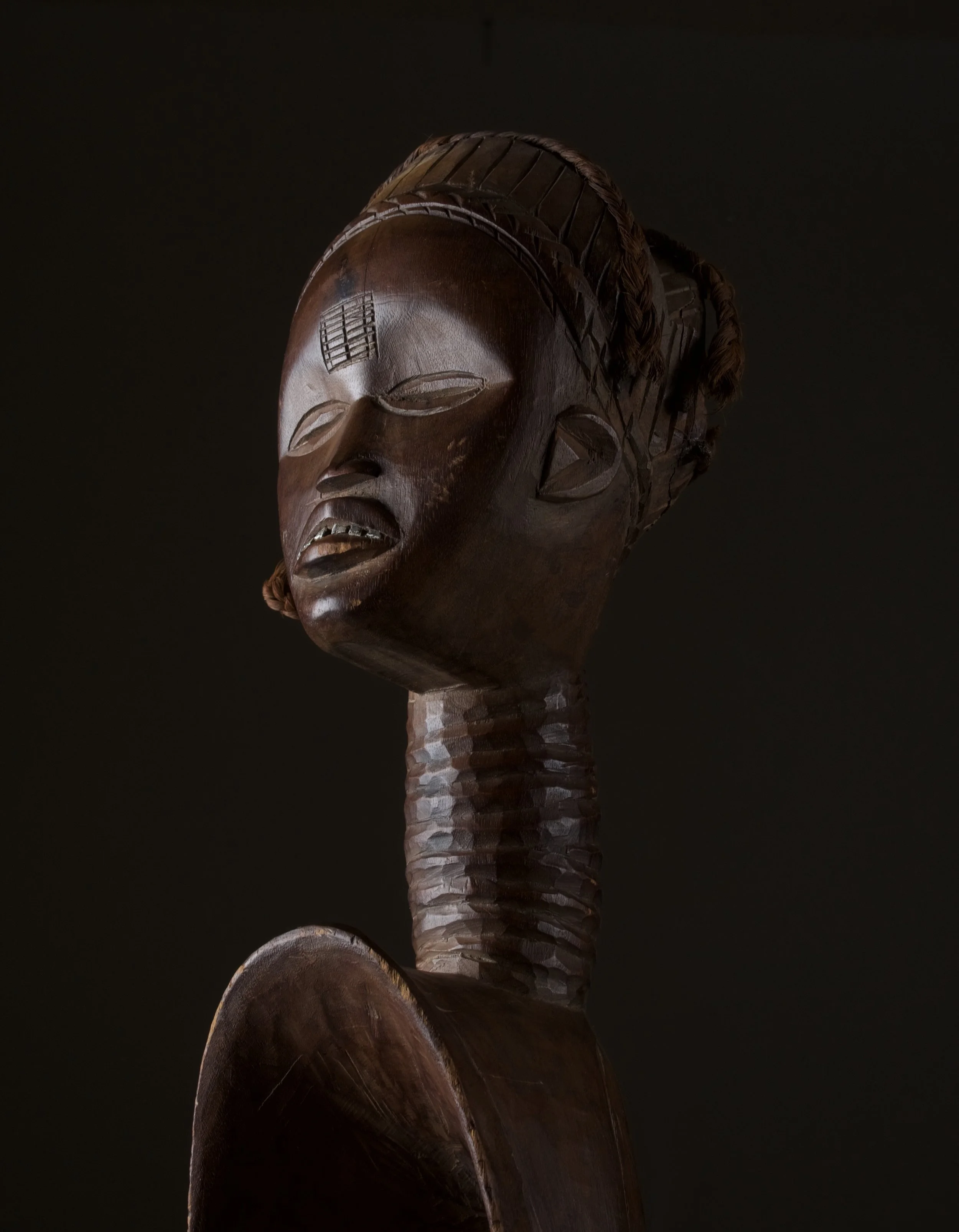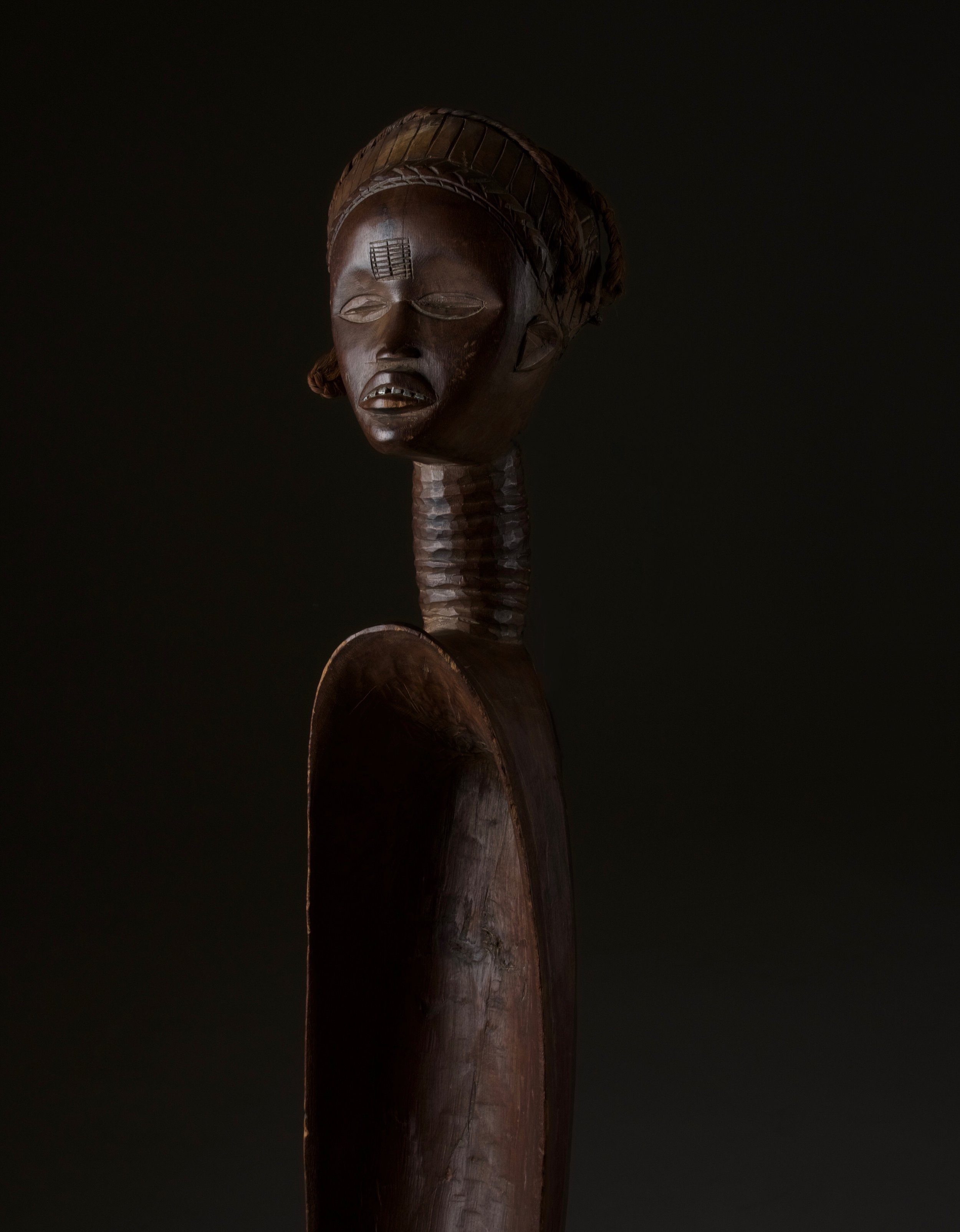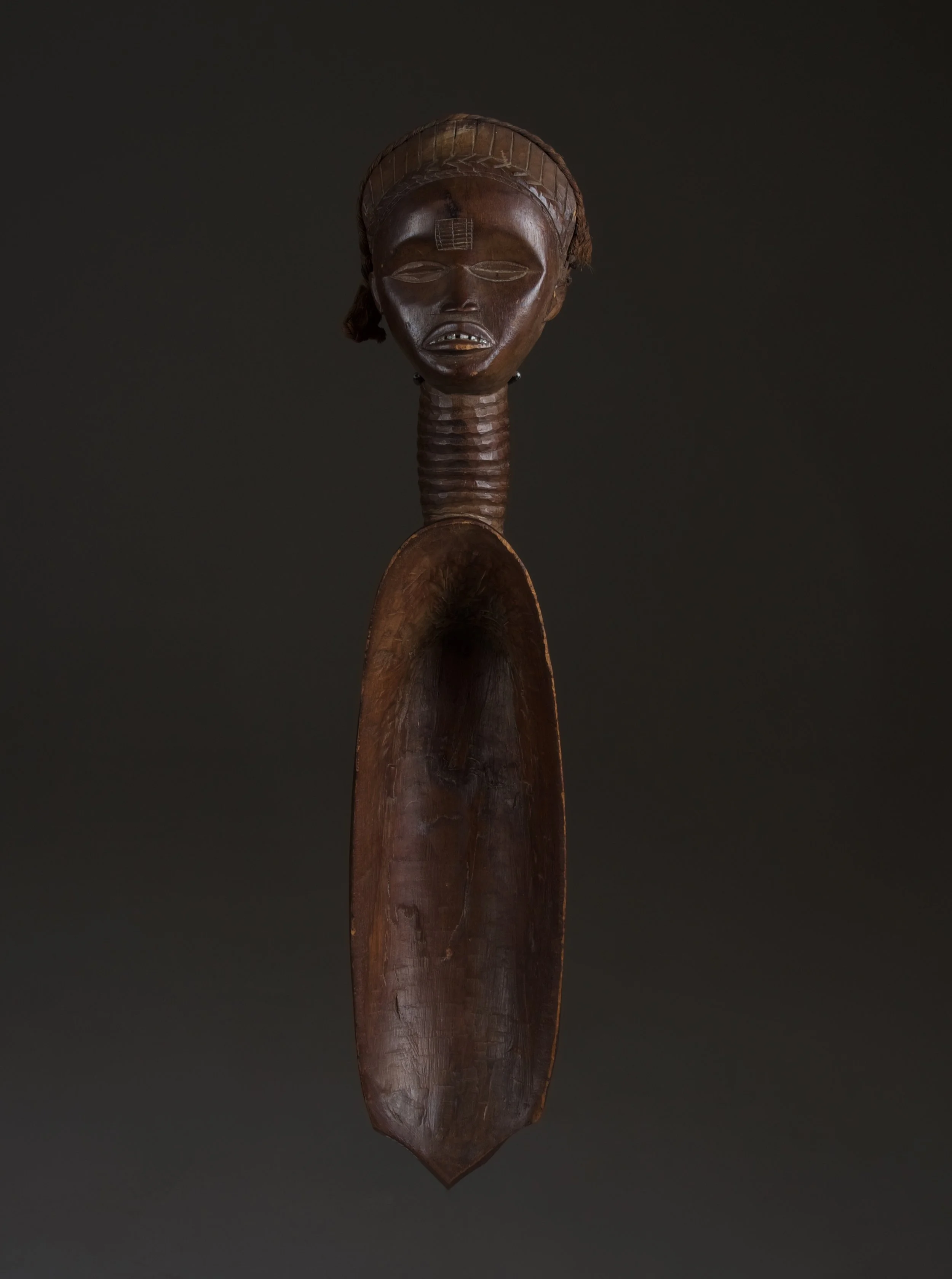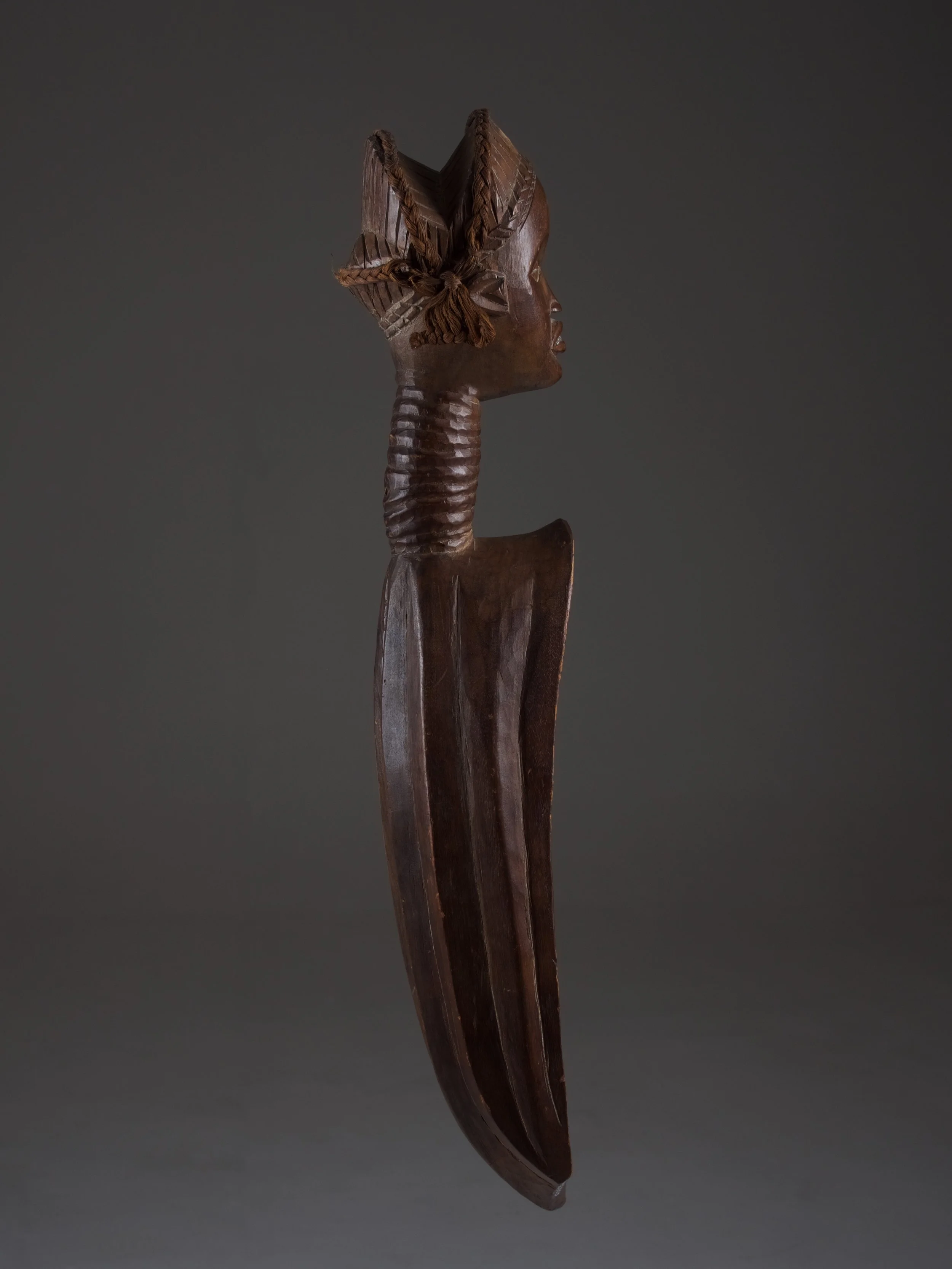Selected Objects
Dan Wunkirmian, feast spoon, Ivory Coast.
Dan Wunkirmian, feast spoon, Ivory Coast.
Stunning “Wunkirmian” feast spoon from the Dan people in Ivory Coast.
This spoon features a carved representation of a woman's head. The oval face features slit eyes and a generous mouth that contains six metal teeth. The coiffure has 2 large crescents extending from ear to ear. On top of the crescents are braided fibre decorations fixed with small wooden pegs. The long, slender, ring carved neck leads to the bowl of the spoon, which is decorated with deep carved linear ridges on the outside surface and a carved linear tattoo. On the bottom side of the spoon is a old collection number painted.
“Artists in Dan communities have mastered the art of carving impressive, large wooden spoons that are virtuoso works of sculpture. The spoons are known by many names, including wake mia or wunkirmian, which translates as "spoon associated with feasts." The handle of the spoon is always decorated and often is related to the human form. Among the Dan, the owner of the spoon is called wa ke de, "at feasts acting woman." It is a title of great distinction that is given to the most hospitable woman of the village. With the honor, however, comes responsibility—the wa ke de must prepare the large feast that accompanies masquerade ceremonies. The excellent farming abilities, organizational talents, and culinary skills of the wa ke de are called upon to properly welcome and celebrate the masquerade spirits. When a woman has been selected as the main hostess of such a feast, she parades through town carrying the large spoon as an emblem of her status. On the day of the feast, she dances around the village dressed in men's clothes because "only men are taken seriously." She carries with her a wunkirmian and displays a bowl filled with small coins or rice. With help from her numerous assistants (usually female relatives or friends), she distributes grains and coins to the children of the community while dancing and singing her special shrill song. The deep belly of the spoon from which this bounty is dispensed becomes the symbolic body or womb of the female figure. The event creates a profound visual analogy that honors the hostess, and women in general, as a source of food and life. In addition to being emblems of honor, wunkirmian also have spiritual power. They are a Dan woman's chief liaison with the power of the spirit world and a symbol of that connection. Among the Dan, the wunkirmian have been assigned a role among women that is comparable to that which masks serve among the men. In many instances, wunkirmian are featured in the same ceremonies with masks, tossing rice in front of them as a blessing while they proceed through the village. ( Text from Metropolitan Museum )”
H. 50 cm
Provenance: US collection.
SOLD
